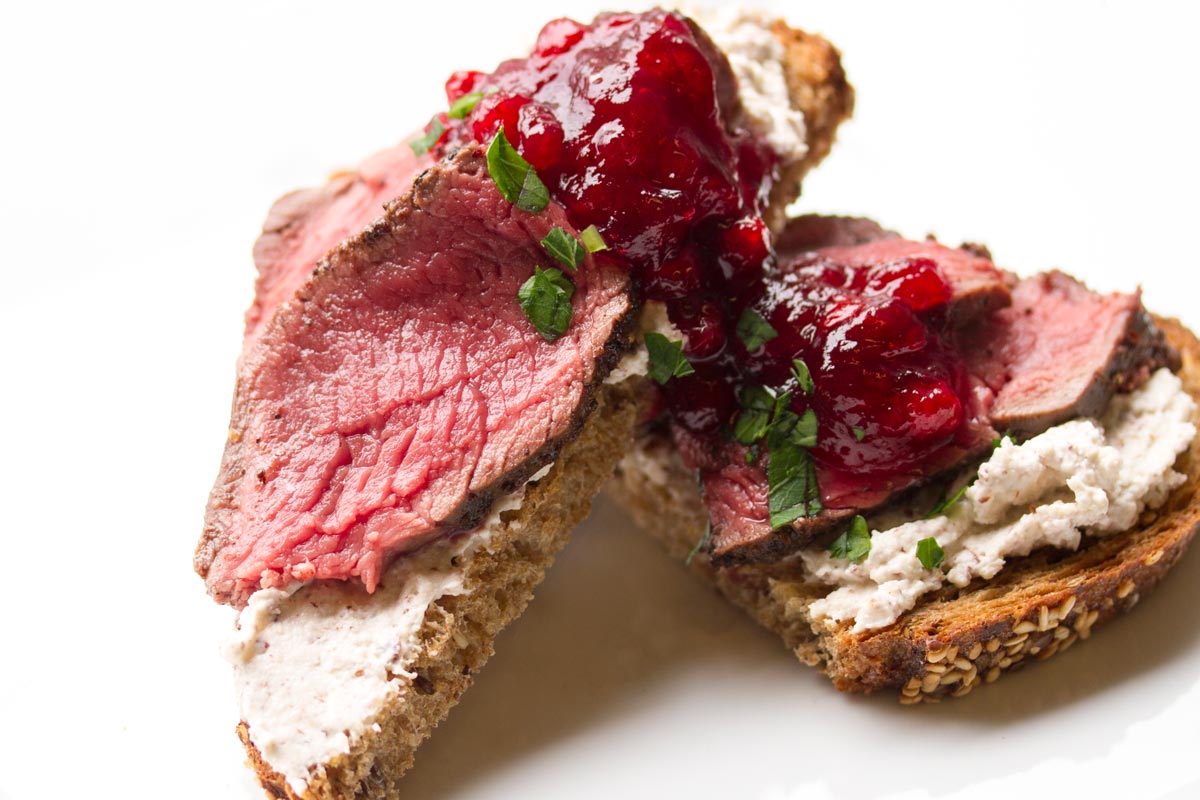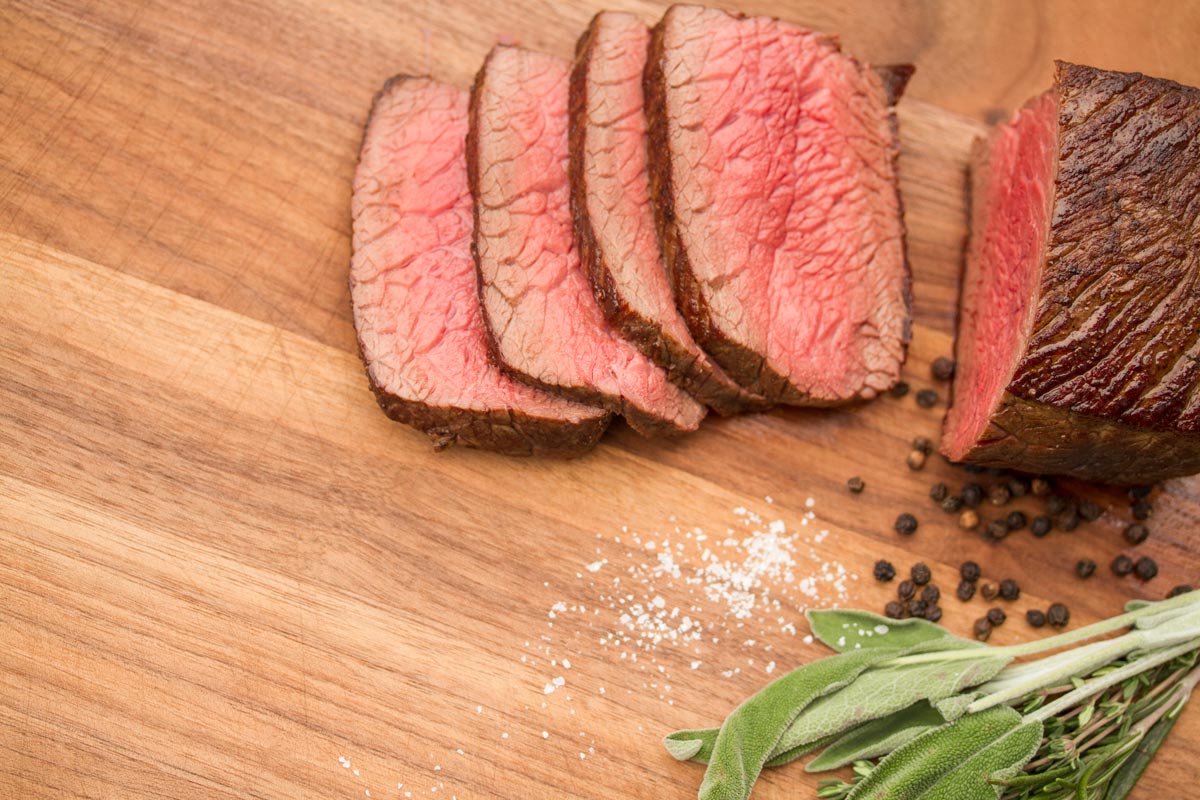
All venison is typically considered game meat, whether it’s farmed or hunted, and it all has a similar naturally-dark-red color. The difference in flavor is vast, though – and this might be the first time we find ourselves solidly rooting for Team Farmed. The flavor is subtler and richer, and the tenderness and consistency is remarkable.
“Sometimes people are a bit hesitant to try venison,” says Karen Oliver, who farms venison in New Zealand, “because they may have had wild venison, which can be gamey and tough. But farmed venison tastes very different and not gamey at all. It’s really tasty and tender.”

“Deer are a beautiful animal to farm,” says William Oliver, who raises them on the North Island of New Zealand. “They’re intelligent which means we are constantly trying to outsmart them! The deer on the farm are always watching and aware of what we’re doing.”
As with other grass-fed meats, the highest-quality venison comes from New Zealand, where the temperate climate allows deer to be raised out on pastures, eating live and growing grasses all year round.
Chris and Robynne O’Connell farm deer on the southernmost coast of the South Island of New Zealand. “They’re free-moving stock,” Robynne says, “which is suitable for our rolling hills.”
Chris adds, “They’re good, fit stock. We try to farm so our animals are healthy, happy and stress-free. It makes for better meat.”

Chefs love venison because it’s still a surprisingly unconventional offering, so they can easily impress diners who don’t eat it frequently and are blown away by its flavor and tenderness.
The flavor of farmed venison is mild and slightly sweet. It can be taken in many different directions, but can also hold its own when paired with big flavors like juniper, black and pink peppercorn, and cacao, and in bold spice blends like the one we used in this twist on a chile relleno.
Venison has traditionally been used with fall through late winter flavors, but we’re seeing chefs and home cooks increasingly using it year round, and in downright summery ways.
Venison pairs well with flavors that hit their peak all year round:
| Season | Pairing |
|---|---|
| Autumn | Apples, Pears, Chestnuts, Mushrooms, Pumpkin, Acorn & Butternut Squash, Raisins, Port Wine, Juniper |
| Winter | Kale, White Beans, Turnips / Celery Root, Brussels Sprouts, Pancetta, Pomegranate, Pink Peppercorns, Grapefruit, Cinnamon / Cloves, Cognac |
| Spring | Arugula, Chervil, Chicory / Dandelion, Mache / Spinach, Watercress, Chives, Fennel, Gin, Kohlrabi |
| Summer | Corn, Chiles, Nectarines / Peaches, Pineapple, Onions, Spinach, Bacon, Grits, Tomato |


As a rule, high-quality meats tend to be less fussy to work with – the meat will be so tasty on its own that you don’t have to jump through hoops to get great results. In fact, you can prepare it very simply, and it will still impress.
Two quick rules of thumb:
| Medallions, Steaks, Chops | High heat, 2 minutes per side |
|---|---|
| Racks & Roasts | Sear on high heat finish in a 450 degree oven, 3 minutes per inch of thickness |
Using venison in appetizers is a great way to try it out and showcase its great flavor. In our test kitchen, we’ve loved serving venison with hazelnut crème fraiche and lingonberries, with an easy and super tasty horseradish sauce, and with cauliflower and a black trumpet mushroom gremolata.

Venison is lean, low in fat, cholesterol, and calories, and high in iron.
According to the USDA National Nutrient Database, New Zealand venison has one-fifth of the fat and 100 fewer calories per 3.5 ounce serving of beef.
Red meat is one of the best sources of easily-absorbable iron, and venison contains more iron than both beef and lamb. Venison is also classified as a “nutrient-dense” source of protein because it’s packed with many nutrients required for good health, like zinc and a number of B vitamins including B12.